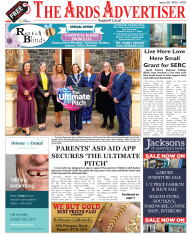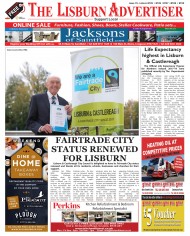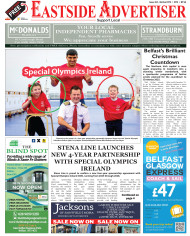Filter by Publication
Design Competition Bringing Play Back to Belfast City Centre
January 2020 - South Side Advertiser

Pictured from L-R: Joan McCoy, RSUA President; Chris McComb, JP Corry Specialist Sales Manager; Eunan Deeney, Hannah Wilson, Nigel Murray, and Matthew Kernan
Young architects in Northern Ireland have produced a series of ideas to re-introduce play into Belfast City Centre with the winning idea set to be developed in 2020.
The proposed designs include a giant zipline offering unique views of the city’s waterfront, a pop-up play area on the titanic slipway tracks and the transformation of a surface car park into a community-led green play space.
The winning idea by Eunan Deeney, Hannah Wilson and Matthew Kernan is entitled Sound Yard. Inspired by the noise of striking metal emanating from the old ship yard, the proposal is for an interactive play area consisting of a constellation of chimes made from metal pipework.
Whilst the sound frequencies are to be reminiscent of the ship yard the aim is to create a harmonic, inclusive play space that provides a focal point on the waterside walkway near the Odyssey.
In the aftermath of the fire at Bank Buildings in September 2018, Belfast City Council installed pop-up play parks as a meanwhile use for streets which were closed to traffic. Their removal in June 2019 sparked a debate about the future of play provision throughout the city centre.
In response, the Royal Society of Ulster Architects (RSUA) and JP Corry developed the “CityPlay” design competition and partnered with Titanic Foundation to identify four sites along the Maritime Mile which would benefit from a temporary play area.
Joan McCoy, RSUA President, said “A city centre designed with children in mind makes for a better city for everyone. Belfast has a wonderful opportunity now to be creative in how it provides public space for play right across the city centre, for children of all ages and for adults too.“
“Choosing to live, shop or visit the city centre is not just about the housing, shops or big attractions. It’s also a question of how attractive, welcoming and enjoyable the wider public environment is. Play is an important part of that package.”
“We look forward to seeing Sound Yard delivered and hopefully some of the other ideas can be taken forward elsewhere in the city centre.”
Chris McComb, Specialist Sales Manager at JP Corry, commented “The standard of entries continues to rise in this annual competition. Congratulations to every applicant and in particular the winning project “Sound Yard” - the quality and talent of our local architects is truly exceptional. Belfast is evolving and the future design of the city is vital. The CityPlay Design Competition is an excellent way to get young people thinking about the role that architecture plays and what it can do for Northern Ireland. We’re delighted to continue our support of the competition and Architecture Night.”
Kerrie Sweeney, Chief Executive of Titanic Foundation, said: “Incorporating play onto the Maritime Mile is a great way to attract local communities and reconnect them with the city’s iconic waterfront. We were delighted with the response to the RSUA competition with so many inspirational ideas and look forward to delivering the winning proposal alongside our partners.”
Thirteen designs competed for the chance to be built and make Belfast a more child-friendly city. Beyond the winning project three projects were commended for their creativity by the judging panel: Play³ by Fergal Rainey with Sean Sloan; The City, Room for Play by David Magennis with Bonnie Chau, and; Welcome to Sailortown by Fearghal Murray with Ben Weir and Erin McQuillan supported by Alissa and Sean from Household Arts.
The four sites identified as possible locations for the play installation were Queen’s Quay, Odyssey, the bottom of the Slipways and Short Street / Sailortown. Entrants were required to design a project that could be delivered for £100,000. The entrants also gave consideration to how the proposed structures could be reused, recycled or repurposed in order to minimise the environmental impact.




























